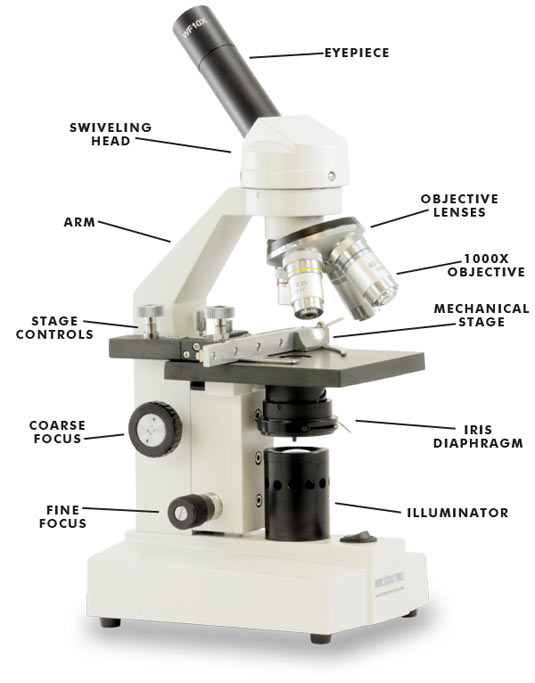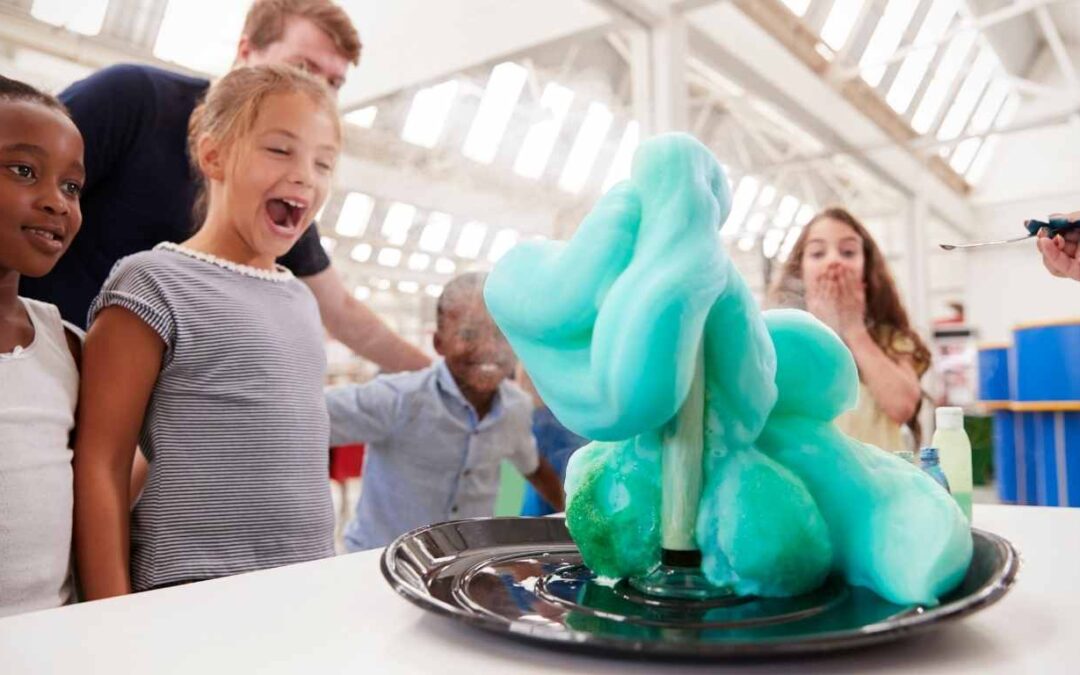Do you need help learning how to effectively use a compound microscope?
It’s not as complicated as it may look – in fact, we hope these instructions will help you quickly become comfortable and proficient at using your microscope!
How to Use Your Compound Microscope |
| Step 1: Set your microscope on a tabletop or other flat, sturdy surface where you will have plenty of room to work. Plug the microscope’s power cord into an outlet. (Note: some compound microscopes don’t use electric lighting, but have a mirror to focus natural light instead.) Switch on your microscope’s light source and then adjust the diaphragm to the largest hole diameter, allowing the greatest amount of light through. If you have an iris diaphragm, slide the lever till the most light comes through. See the diagram below for help locating these parts. Step 2: Rotate the nosepiece to the lowest-power objective (usually 4x for 40x magnification). It is easiest to scan a slide at a low setting, since you have a wider field of view at low power. Step 3: Place a microscope slide on the stage, either under the stage clips or clipped onto the mechanical stage if your microscope has one. A prepared slide works best when you do this for the first time. (If you do not have a prepared slide, place a strand of colored yarn or thread on a blank slide and place a coverslip over it.) Move the slide until the specimen is under the objective lens. Step 4: Adjust the large coarse focus knob until the specimen is in focus. Slowly move the slide to center the specimen under the lens, if necessary. Do this by nudging it gently with your fingers or by turning the slide control knobs if you have a mechanical stage. Step 5: Adjust the small fine focus knob until the specimen is clearly in focus. Then adjust the diaphragm to get the best lighting. Start with the most light and gradually lessen it until the specimen image has clear, sharp contrast. (Note: Some microscopes have only one focus knob, for “intermediate” focus.) Step 6: Scan the slide (right to left and top to bottom) at low power to get an overview of the specimen. Then center the part of the specimen you want to view at higher power. Rotate the nosepiece to the 10x objective for 100x magnification. Refocus and view your specimen carefully. Step 7: Adjust the lighting again until the image is most clear (you will need more light for higher power). Repeat with the 40x objective for 400x magnification, which will enable you to see all of the specimen detail that’s necessary for high school biology lab work.
Once you’ve mastered the basics of using your microscope, you can expand your microscope studies. Print out copies of our Microscope Observation worksheet to help you record what you see! |
Diagram of Microscope Parts |
 |
Microscope Cleaning and Maintenance |
| To clean the exterior side of lenses, use a non-solvent cleaning solution designed for cleaning optics or eyeglasses. First remove dust with a soft brush or can of compressed air. Then moisten a piece of dry lint-free tissue or lens paper and clean the lens surfaces with a circular motion. Repeat with a second piece of paper moistened with lens solution if necessary. Repeat once again with dry lens paper until the lens is clean and dry. Use this same procedure for the eyepiece and objective lenses.
To clean the interior side of lenses, DO NOT use the above procedure. Rather use a bulb-type duster or a compressed gas canister designed specifically for cameras/microscope cameras and other optical equipment. Only use a microfiber cloth. Order our Microscope Cleaning Kit for a complete set of tools to clean your microscope with. To clean the body of the microscope, use a soft dry or damp cloth. Using a dust cover will help keep your microscope investment clean and dust-free. |
More Information
Find an affordable set of prepared slides to use with your microscope, whether you’re interested in anatomy, zoology, botany, or just want a starter set.
Check out our tips for making slides and doing other activities with your microscope.





